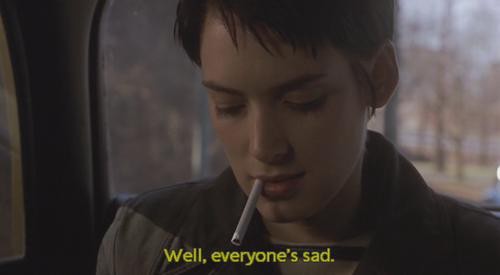A Low Cost DIY Approach to Depression! Caveat: It Doesn’t Work
by Alizah Salario

When my yoga instructor told our class about a workshop for depression and anxiety, I envisioned a bunch of spandex-clad women tossing their Wellbutrin into the altar at the front of the studio, watching the orange prescription bottles melt into the flames of scented pillar candles.
I have similar fantasies about triumphing over anxiety and depression every time I hatch a new plan to “fix” these issues. Some attempts have been valiant, others not, but my hopeful reaction to each potential panacea — like when I went to a ten-day silent meditation retreat, or when I stopped eating sugar to detoxify depression-causing gut bacteria, or when I started doing yoga in the first place — is always the same: This thing might finally be the thing to rid me of what I’ve come to call “The Problem,” one that ranges from mildly numbing to absolutely crippling.
For 10-plus years, I’ve taken a do-it-yourself approach to dealing with anxiety and depression. The DIY ethic is one of self-sufficiency: Make do with what you’ve got; rely on instincts and intelligence, not specialists and your pocketbook. Instead of spending money on therapy and/or medication, over the years I’ve put a small amount toward my DIY mental health plan, including but not limited to the following:
- Ten-day silent Vipassana meditation retreat: Free!
- Occasional Xanax or Celexa gifted by friends with prescriptions: Free!
- Area Yoga five-class pack: $70
- Nordic Naturals Omega-3 softgels without fish oil (Omega-3 fatty acids are supposed to mitigate depression in some people): $15.29
- 16 oz. Green Juice: $5.72 (more nutrients to lift my mood)
- Mindspace meditation app: Free!
- Various books on mindfulness including The Power of Now and The Seat of the Soul: Approx. $19.72
- Yoga for depression and anxiety workshop (forthcoming): $30 in advance, $35 at the door
I take pride in my can-do attitude in other aspects of my life, so applying this ethos to my mental health made sense. I grew up in a family where depression was considered a problem for people who didn’t have “real” problems; it was thus assumed to be all in my head. I absorbed that. If my anxiety and depression were real, I reasoned, I would be crying all the time and unable to get out of bed, right? For many years, I wasn’t sure how to distinguish mental health issues from the grief and sadness that resulted from specific losses and disappointments.
It took a “real” event — a panic attack on the subway that left me crouching on the floor among strangers, unable to breathe, certain I was about to die — to get me acknowledge maybe, perhaps, The Problem was real.
Even after this incident, my DIY approach continued, specifically because I have bare bones insurance that doesn’t offer great mental health coverage, and in general because mental health care is expensive. There are affordable options out there, but therapy in New York can run upwards of $200 a session, and retail prices for commonly prescribed antidepressants range from $21-$100 per month, according to Consumer Reports. (Although it’s worth mentioning that stores like Target and Walmart offer plans for certain generic brands starting at $4 a month, or $10 for three months.)
With so many ways to pick myself up that don’t require therapy or medication — Yoga boosts serotonin! Mindfulness can help let go of negative thoughts! — I felt a social responsibility to neutralize the dark storm cloud hovering over my head before I rained on everyone else’s parade. Also: Writer, anxious, depressed, New York? Yawn. Taking my mental health into my own hands allowed me to sidestep the connotations that come with labels, prescriptions, and diagnoses.
The only problem with my DIY approach is that it failed miserably.
Well, that’s not totally true. To some extent, each approach helps. I feel accomplished when I’m teetering toward debilitating negativity and eventually anchor myself in breath or positive thought patterns.
But over the years, my DIY approach led to diminishing returns. Nothing resulted in permanent change, a fact that still sends me spiraling deep into self-flagellation when I realize I’ve failed, once again, to rewire my neural pathways through downward dog. (Go figure.) I’ve told myself I needed to try harder, stop wallowing, be more consistent, push myself further, drink more green juice, hold the plank pose longer, and, and … I’d be a different person entirely!
It’s a vicious cycle that left me feeling spent, pun intended.
The panic attack incident prompted me to start seeing a certified mental health professional over the last few months. I pay out of pocket on a sliding scale, $85 a session, and my therapist confirmed what I’ve long known, that yes, in fact, I do suffer from an anxiety disorder and dysthymia, a mild but chronic form of depression.
The die-hard DIYer in me feels like I caved. The sensible part of me feels relieved that I no longer have to rely on shadow treatments and strategies that are meant to help me manage The Problem, not singlehandedly eradicate it. Sometimes, labels can be validating. But I’ll take the yoga workshop nonetheless. I’m still a believer in DIY. It’s just that, sometimes, doing it yourself requires a few helping hands.
The Roundup takes a glass half full approach to personal and behavioral finance. In her columns, Alizah examines the biases, assumptions and emotions we often unknowingly attach to money. And yes, she always rounds up.
Support The Billfold
The Billfold continues to exist thanks to support from our readers. Help us continue to do our work by making a monthly pledge on Patreon or a one-time-only contribution through PayPal.
Comments